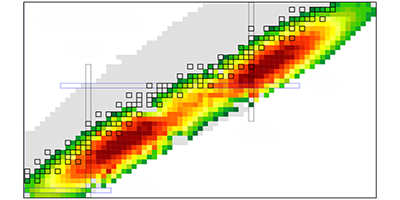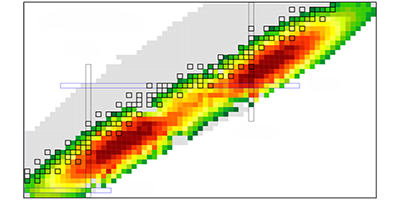Whence Antineutrinos?
Nuclear reactors are intense sources of neutrinos, generating over antineutrinos per second as fission products undergo beta decay. Detecting these antineutrinos could be used to monitor reactors in nonproliferation programs but also to test fundamental questions in neutrino physics: recent measurements revealed that the measured antineutrino flux is lower than predicted—a puzzling finding known as the “antineutrino anomaly.” Such a deficit could imply that some neutrinos are lost, for instance, by transforming into undetectable “sterile” neutrinos not predicted by the standard model. Now, the calculations of scientists from the National Nuclear Data Center at Brookhaven National Laboratory, New York, may lead to better models of antineutrino emission for both fundamental studies and applications. The results suggest that just a few among hundreds of possible fission fragments are responsible for most of the detectable antineutrinos emitted by a fission reactor.
The authors modeled antineutrino spectra using a “summation method”: for the four most important fissile nuclei contained in the fuel of conventional reactors (uranium-235, uranium-238, plutonium-239, and plutonium-241), they calculated the spectrum of emitted antineutrinos by summing up the contribution from each possible fission fragment. Out of 800 nuclides that can contribute to antineutrino emission, the authors’ analysis showed that only a handful of nuclides (92-rubidium and 96-ytterbium in particular) provide the majority of neutrinos, in particular at the high-energy side of the spectrum (where the discrepancies between theory and experiments are expected to be larger). The results suggest that to tackle the antineutrino anomaly with more accurate models, experiments should thus focus on characterizing these few key nuclei, since small changes in their beta-decay parameters will have a strong effect on the antineutrino emission.
This research is published in Physical Review C.
–Matteo Rini





